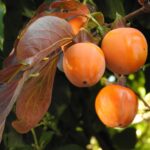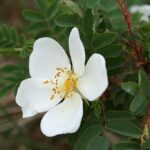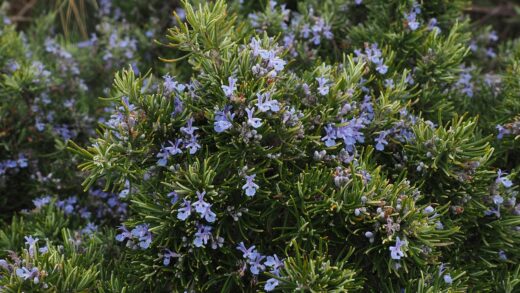The American tulip tree, also known as Liriodendron tulipifera, is a truly majestic and fast-growing ornamental tree that, with proper care, can be a jewel in our garden for decades. Although it is considered a relatively hardy and not overly demanding species, a thorough understanding of its nutrient requirements and expert fertilization are essential for abundant flowering and healthy, vigorous growth. In this article, we will explore in detail what this wonderful tree needs to be at its best and how to avoid problems arising from improper nutrient supply. Proper care pays off, as a healthy tulip tree not only provides shade but also enchants us with its unique, tulip-like flowers in late spring and early summer. The basis of proper nutrition is knowledge of the soil, so it is wise to conduct a soil analysis before any major intervention.
General Requirements and Ideal Soil
The tulip tree fundamentally prefers well-drained, deep, and nutrient-rich soils, but it adapts surprisingly well to less-than-ideal conditions. In its natural habitat in eastern North America, it is often found in river valleys and moist forests where the soil is rich in humus and has a slightly acidic reaction. This preference is also a guide for garden cultivation, so it is advisable to improve the soil with organic matter such as mature compost or cattle manure at the time of planting. Overly compacted, clay soils can lead to root suffocation, while very loose, sandy soils cannot adequately retain water and nutrients. In terms of acidity, a neutral to slightly acidic soil with a pH between 6.0 and 7.0 is ideal for it.
Nutrient uptake is heavily influenced by soil structure and pH, so these factors must be given special attention. Alkaline, calcareous soils, for example, can inhibit the uptake of iron and manganese, leading to chlorosis, which is the yellowing of leaves while the veins remain green. This phenomenon is often confused with nitrogen deficiency, although its treatment requires a completely different approach. To improve soil structure, in addition to incorporating the aforementioned organic materials, mulching can also be an excellent solution. Covering the area around the base of the tree with pine bark or wood chips not only inhibits weed growth and conserves moisture but also slowly acidifies the soil as it decomposes, enriching it with valuable nutrients.
It is important to understand that the nutrient needs of young, newly planted trees differ from those of older, established specimens. In the first few years, the emphasis is on the vigorous development of the root system and the formation of a proper scaffold structure, for which phosphorus and potassium are essential. Later, as the tree grows, the role of nitrogen becomes more prominent, as it is responsible for the formation of foliage and new shoots. However, excessive nitrogen application should be avoided, as it leads to lanky shoot growth and weakened tissues, making the tree more susceptible to diseases and pests, and can also reduce the propensity to flower. A balanced nutrient supply is the key to long-term health and a spectacular appearance.
Proper soil preparation and knowledge of the tree’s needs are therefore the first and most important steps. Before starting any fertilization program, it is advisable to observe the general condition of the tree, the color of the leaves, the rate of shoot growth, and the intensity of flowering. These signs reveal a great deal about the tree’s current nutritional status and help in targeted intervention. Let us not forget that prevention is always easier and more effective than treating deficiency symptoms that have already appeared, so from the moment of planting, let us take care to create an optimal environment for the tulip tree. A well-prepared planting hole and initial care lay the foundation for the tree’s healthy development for decades to come.
More articles on this topic
The Role of the Most Important Nutrients
For healthy development, the American tulip tree, like any plant, needs the three main macronutrients: nitrogen, phosphorus, and potassium. Nitrogen (N) is primarily responsible for the growth of the vegetative parts, i.e., the leaves and shoots. In its absence, growth slows, the leaves become smaller and take on a pale green, yellowish hue, with the symptom first appearing on the older, lower leaves. An adequate supply of nitrogen ensures a lush, healthy foliage, which is essential for photosynthesis, the tree’s energy production process. However, an excess of nitrogen, as mentioned earlier, can be at the expense of flowering and make the tree more sensitive.
Phosphorus (P) plays a key role in energy transfer processes, root formation, and the production of flowers and fruits. In the case of the tulip tree, an adequate supply of phosphorus is essential for abundant and spectacular flowering. In case of a phosphorus deficiency, the root system develops weakly, which impairs the uptake of water and nutrients, and the leaves often take on a darker, bluish-green, sometimes purplish hue, and their growth is also stunted. Phosphorus is also indispensable in the construction of cell walls and in the molecules that carry genetic information, so its deficiency negatively affects the entire development of the tree. Especially for young trees, a starter fertilization rich in phosphorus is important.
Potassium (K), often called the “quality” element, is involved in the regulation of numerous physiological processes. It helps the tree manage its water, increases its tolerance to stress from drought, cold, and diseases. Potassium also plays a role in the transport and storage of sugars, which contributes to improving the tree’s winter hardiness and maintaining its overall vitality. In case of a potassium deficiency, the edges of the leaves characteristically begin to yellow, then turn brown and dry out, as if they have been scorched. This symptom also appears first on the older leaves and leads to a decrease in the tree’s resistance.
In addition to the macronutrients, the micronutrients, although needed in much smaller quantities, are just as indispensable for the tree’s health. Of these, iron (Fe) and manganese (Mn) are the elements that most frequently cause deficiency symptoms, especially on calcareous, alkaline soils. Both play a role in the formation of chlorophyll, and their deficiency causes the aforementioned chlorosis, an interveinal yellowing that appears on young, fresh shoots. In addition, zinc (Zn) has an important role in the regulation of growth hormones, boron (B) in the setting of flowers and fruits, and copper (Cu) and molybdenum (Mo) in various enzymatic processes. The deficiency of these elements occurs less frequently, but a complete soil analysis can reveal potential problems.
More articles on this topic
Timing and Methods of Fertilization
The ideal time to fertilize the tulip tree is in the spring, before or at the beginning of the growing season, usually from late March to early May. During this period, the tree awakens from its winter dormancy, and the growth of shoots and roots is most intense, so it can absorb and utilize the provided nutrients most efficiently. An early spring fertilization provides the tree with enough “fuel” for the development of foliage and for flowering in early summer. Fertilization in late summer or autumn, especially with a high nitrogen content, should be avoided, as it can stimulate the growth of new shoots that would not have time to mature before the frosts and would thus easily suffer frost damage, weakening the tree.
The method of fertilizer application is also crucial. The most common mistake is to spread the nutrient directly at the base of the tree, ignoring the fact that the majority of the nutrient-absorbing fine roots are not located there but in the zone under the edge of the crown, the so-called dripline. The most effective method is to evenly distribute the granular, slow-release mineral fertilizer or the mature organic manure in this area and then shallowly incorporate it into the soil with a hoe. Afterward, a thorough watering helps to dissolve the nutrients and get them to the roots. The fertilizer can also be spread under a layer of mulch, so it will gradually be released into the soil along with the decomposition processes.
For young, newly planted trees, in the first one to two years, supplementary fertilization is usually not necessary, provided that the planting hole has been properly prepared with organic matter. Too early and intensive fertilization can even “burn” the young roots. From the third year onwards, if the growth rate seems to be slowing or the color of the leaves is no longer bright green, one can begin with maintenance fertilization. For older, already mature trees in good condition, a dose of a slow-release, complex mineral fertilizer or mature compost every two to three years is often sufficient to maintain soil life and nutrient levels.
There are also liquid, water-soluble nutrient solutions that provide a faster effect, as the nutrients are already in dissolved form. These should be used primarily for the rapid treatment of already occurring, acute deficiency symptoms, such as iron chlorosis, by applying them either as a foliar fertilizer or by drenching. With foliar fertilization, the nutrient is absorbed through the leaves, which provides an immediate but only temporary solution. The basis for a long-term, sustainable nutrient supply is always supplementation through the soil with solid or slow-release fertilizers that supply the root zone with the necessary elements.
The Use of Organic and Mineral Fertilizers
For the nutrition of the tulip tree, both organic and mineral fertilizers are suitable, and the best result is often achieved with their combined use. Organic fertilizers, such as mature cattle manure, compost, or granulated poultry manure, not only supply nutrients to the soil but also play an extremely important role in improving its structure. They increase the humus content of the soil, which improves its ability to retain water and nutrients, promote the proliferation of beneficial soil microorganisms, and ensure a slow, steady release of nutrients. Organic materials also help to maintain the soil pH at an optimal level.
When using organic fertilizers, it is crucial to use only fully mature, composted material. Fresh, immature manure can “burn” the tree’s roots due to its high ammonia content and may also contain weed seeds. Mature compost or cattle manure should be spread on the soil surface in the tree’s dripline in early spring and shallowly incorporated. From organic materials, the nutrients are released slowly, thanks to the activity of microorganisms, making them available to the tree throughout the season and minimizing the risk of overdose. A 3-5 cm thick layer of compost also acts as a mulch, protecting the soil from drying out.
The advantage of mineral fertilizers is their higher and precisely known active ingredient content, as well as their faster action. They can be particularly useful when a specific nutrient deficiency needs to be corrected quickly or when the soil is so poor that organic fertilizers alone are not sufficient. For the tulip tree, balanced, complex (N-P-K) mineral fertilizers that also contain micronutrients are the most suitable. It is advisable to choose slow-release or controlled-release formulations, as these provide nutrients evenly over several months, avoiding sudden concentration spikes and the risk of leaching.
When using mineral fertilizers, strictly follow the dosage instructions on the packaging. Over-fertilization can cause much more damage than a nutrient deficiency: an increased salt concentration in the soil damages the roots, inhibits water uptake, and in extreme cases can even lead to the tree’s death. Mineral fertilizer should always be applied to moist soil and followed by a thorough watering. Never spread the granules on the tree trunk or wet foliage, as this can cause burns. The best approach is integrated nutrient management, where organic materials are used to improve soil structure and maintain biological activity, and targeted nutrient supplementation is done in moderation, if necessary, with good quality mineral fertilizers.
The Role of Soil pH and Its Correction
The soil pH is one of the most critical factors that determines how efficiently the tulip tree can absorb the nutrients present in the soil. As already mentioned, this tree species prefers a neutral to slightly acidic pH range, between 6.0 and 7.0. In this medium, most of the vital macro- and micronutrients are present in a form absorbable by the plant. If the soil is too alkaline (high pH, above 7.5), the solubility of iron, manganese, and zinc decreases drastically, and although they are present in the soil, the tree will “starve” for these elements. This leads to iron chlorosis, which is often observed on calcareous soils.
In the case of soil alkalinity, the long-term solution to the problem is soil acidification. There are several methods for this, the most natural of which is the regular use of acidic-reacting organic materials, such as peat, pine bark mulch, or oak leaf compost. During their decomposition, these slowly and gradually lower the soil’s pH. A faster, but caution-requiring solution is the incorporation of elemental sulfur or aluminum sulfate into the soil. However, these substances should only be used according to the exact dosage instructions and preferably based on a pH value determined by a soil analysis, to avoid excessive acidification, which can also be harmful.
Less commonly, but it can happen, the soil is too acidic (pH below 5.5). In such an extremely acidic environment, the uptake of calcium and magnesium is hindered, while aluminum and manganese can be released from the soil in quantities toxic to the plant. Although the tulip tree prefers a slightly acidic environment, excessive acidity is already harmful to it. To raise the soil pH, i.e., to make it more alkaline, the most commonly used material is ground limestone (calcium carbonate) or dolomite, which contains both calcium and magnesium. These should also be spread on the soil surface and incorporated, preferably in the autumn, so that winter precipitation can help them wash in.
Conducting a soil analysis is the most effective way to get an accurate picture not only of the soil’s nutrient content but also of its pH value. A simple test kit available in garden stores can give an approximate result, but a laboratory analysis is much more detailed and accurate. With the results in hand, we can take targeted corrective steps, whether it’s acidification or alkalinization. Let’s not forget that adjusting the soil pH is a slow process that can take several years, but the invested energy is rewarded in the tree’s healthy, vigorous growth and the avoidance of deficiency symptoms.
Common Mistakes and Their Prevention
One of the most common mistakes in fertilizing the tulip tree is over-fertilization, especially an overdose of nitrogen. Many believe that the principle of “the more, the better” also applies here, but this is a serious mistake. An excessive supply of nitrogen, as already mentioned, leads to lanky shoot growth and a weakening of the tissues, which not only reduces resistance to diseases but can also inhibit flowering, as the tree focuses all its energy on growing foliage. In addition, the excessive use of mineral fertilizers increases the salt content of the soil, causing osmotic stress to the roots and, in extreme cases, can lead to the tree’s desiccation and death. The key to prevention is moderation and adherence to the dosage instructions.
Another common problem is improper timing. A fertilizer applied in late summer or autumn, especially one rich in nitrogen, stimulates the growth of fresh new shoots, just when the tree should be concentrating on preparing for winter and the maturation of its shoots. These new, tender shoots do not lignify before the frosts, so they easily suffer frost damage, which leaves open wounds for pathogens and unnecessarily depletes the tree’s energy reserves. Fertilization should always be planned for the active growing period in the spring. The only exception may be “autumn” fertilizers with a predominance of potassium, which are intended to improve winter hardiness, but even these should only be used in justified cases, at the end of the summer.
The third typical source of error is the incorrect application of the fertilizer. Many pour the granules or the nutrient solution directly at the base of the tree, ignoring the fact that the majority of the nutrient-absorbing fine roots are located under the edge of the crown, in the dripline. The thicker roots near the trunk are primarily responsible for anchorage and transport; their nutrient uptake is minimal. Concentrated mineral fertilizer spread on the trunk or thick roots can cause burns and damage. The correct procedure is the even distribution of the fertilizer over the entire root zone, followed by a shallow incorporation and a thorough watering.
Finally, but not least, it is a mistake to ignore the signals sent by the tree and the condition of the soil. A routine fertilization, performed every year in the same way and in the same amount, is not always the best strategy. Observe the color and size of the leaves, the rate of shoot growth, and the intensity of flowering. Pale, yellowish leaves or weak growth can indicate a nutrient deficiency, while an overly dark green, lush foliage without flowers suggests an excess of nitrogen. Before taking more serious measures, a soil analysis helps to accurately identify the problem, avoiding unnecessary or even harmful nutrient application. A conscious care, based on observation, is the secret to a long and healthy life, also in the case of the tulip tree.




















